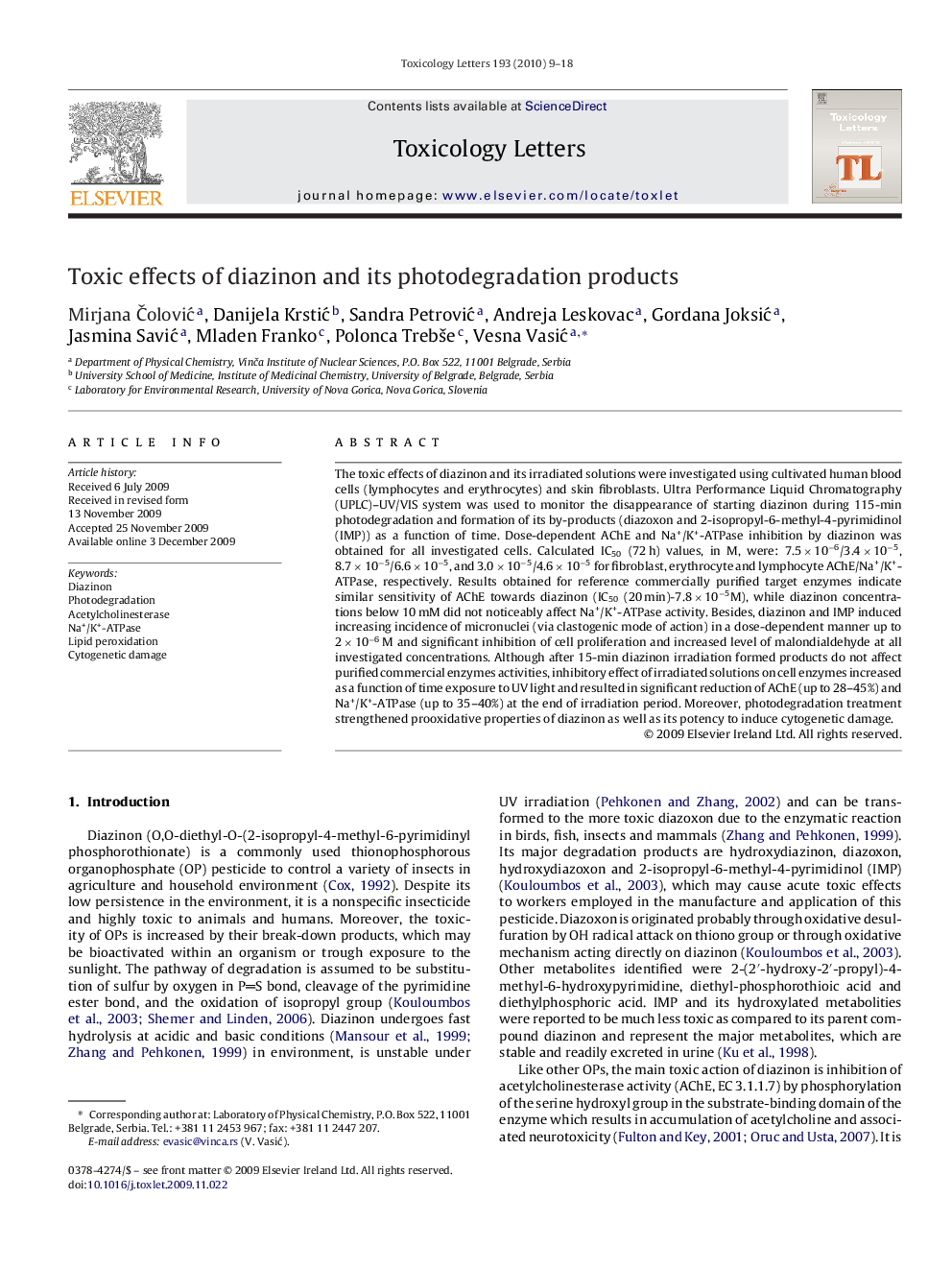| Article ID | Journal | Published Year | Pages | File Type |
|---|---|---|---|---|
| 5860957 | Toxicology Letters | 2010 | 10 Pages |
The toxic effects of diazinon and its irradiated solutions were investigated using cultivated human blood cells (lymphocytes and erythrocytes) and skin fibroblasts. Ultra Performance Liquid Chromatography (UPLC)-UV/VIS system was used to monitor the disappearance of starting diazinon during 115-min photodegradation and formation of its by-products (diazoxon and 2-isopropyl-6-methyl-4-pyrimidinol (IMP)) as a function of time. Dose-dependent AChE and Na+/K+-ATPase inhibition by diazinon was obtained for all investigated cells. Calculated IC50 (72Â h) values, in M, were: 7.5Â ÃÂ 10â6/3.4Â ÃÂ 10â5, 8.7Â ÃÂ 10â5/6.6Â ÃÂ 10â5, and 3.0Â ÃÂ 10â5/4.6Â ÃÂ 10â5 for fibroblast, erythrocyte and lymphocyte AChE/Na+/K+-ATPase, respectively. Results obtained for reference commercially purified target enzymes indicate similar sensitivity of AChE towards diazinon (IC50 (20Â min)-7.8Â ÃÂ 10â5M), while diazinon concentrations below 10Â mM did not noticeably affect Na+/K+-ATPase activity. Besides, diazinon and IMP induced increasing incidence of micronuclei (via clastogenic mode of action) in a dose-dependent manner up to 2Â ÃÂ 10â6Â M and significant inhibition of cell proliferation and increased level of malondialdehyde at all investigated concentrations. Although after 15-min diazinon irradiation formed products do not affect purified commercial enzymes activities, inhibitory effect of irradiated solutions on cell enzymes increased as a function of time exposure to UV light and resulted in significant reduction of AChE (up to 28-45%) and Na+/K+-ATPase (up to 35-40%) at the end of irradiation period. Moreover, photodegradation treatment strengthened prooxidative properties of diazinon as well as its potency to induce cytogenetic damage.
